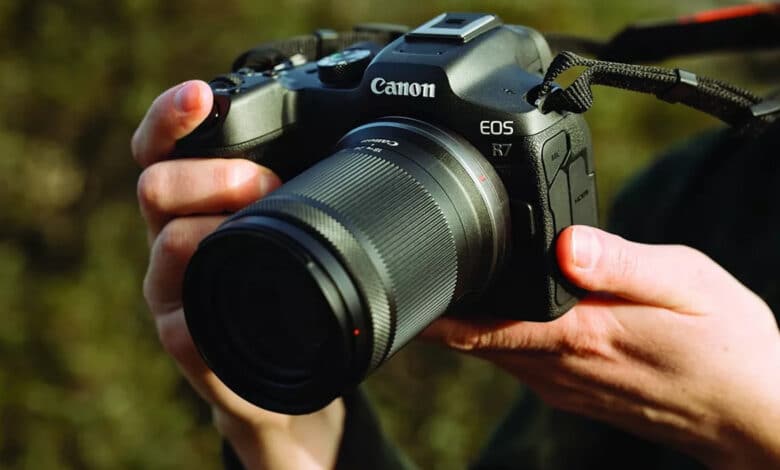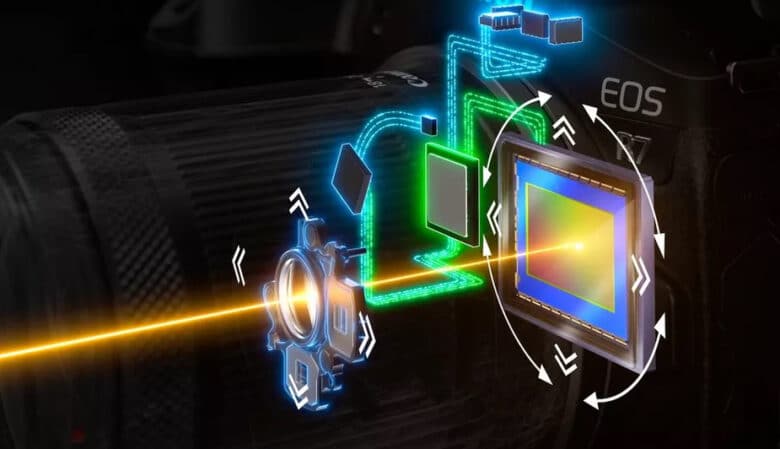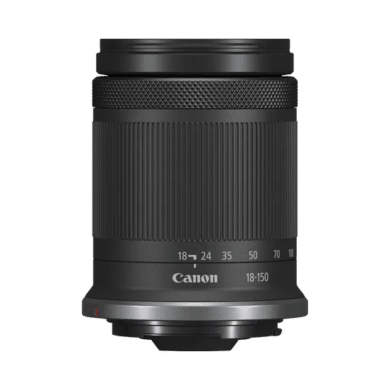
With the Canon EOS R7 and EOS R10, the manufacturer has introduced its first mirrorless APS-C cameras for the EOS R system. The R7 is positioned as a top model for nature and sports photography, while the EOS R10 is a mobile all-round camera. They are joined by two exciting new lenses in the RF-S series.
Canon EOS R7 and EOS R10 unveiled
The new Canon EOS R7 (32.5 megapixels) and EOS R10 (24.2 megapixels) bring the intelligent autofocus technology of Canon’s in-house full-frame cameras to the APS-C segment. Thanks to Deep Learning and Dual Pixel CMOS AF II, moving subjects such as vehicles, animals and people are detected and tracked across the entire surface of the sensor with precise head, face and eye detection.
According to the manufacturer, the autofocus is said to be perfectly seated even in difficult lighting conditions with up to -5 EV or -4 EV. This means that animals in full motion or fast sports scenes can be captured sharply. Both cameras feature touch & drag AF, while the EOS R7 offers a new and innovative combination of dial and AF multi-controller (joystick).

With a 15 fps mechanical shutter and a 30 and 23 fps electronic shutter, the R7 and R10 are as fast as an arrow. On the Canon EOS R7, that’s good enough for a maximum mechanical shutter speed of 1/8,000 second, or a maximum electrical speed of 1/16,000 second. The switchable RAW burst mode captures up to 30 RAW images per second. Individual images can then be picked from the resulting image series for post-processing.

Thanks to PreRec function, the camera in this mode even records 0.5 seconds before the start of the recording. You know: just before the child or pet blinked or looked away.
EOS R7 with IBIS
The Canon EOS R7 also features an in-body image stabilizer (IBIS for short), allowing for seconds of freehand exposure. Up to eight exposure levels can be compensated by this. For the first time on EOS cameras, the IS system is used to level the horizon when the Auto Level function is activated.
At the same time, however, the IBIS now also works with the new Panorama mode to compensate for camera shake when panning. The newly developed 32.5- and 24.2-megapixel APS-C sensors of the EOS R7 and EOS R10 offer a wider range compared to full-frame. Dual Pixel RAW as well as HEIF, Compact RAW and HDR modes are also offered.
Thanks to Digital Lens Optimizer, JPEG files stored in the camera are also automatically read, while the camera directly corrects aberrations without affecting the image.

The EOS R7, with battery and SD card, weighs in at 612 grams. For the Canon EOS R10, it is even only 429 grams, which makes both cameras perfect for on the go. However, only the body of the R7 is robust and weatherproof.
4K videos at 60 FPS
Both the Canon EOS R7 and EOS R10 can record videos in 4K resolution at up to 60 FPS, but the footage is cropped in the process. Otherwise, 4K at 30 frames per second is possible on the full screen. The videos are created from the 7K or 6K sensor data via oversampling, which promises improved image quality.
The included battery is said to allow up to six hours (EOS R7) or up to two hours (R10) of recording in 4K60. Both models support recording in HDR PQ (YCbCr 4:2:2 10-bit BT.2020) with a high dynamic range with minimal grading.
Comprehensive connectivity
The cameras rely on an electronic viewfinder with 2.36 million pixels. Individually configurable dials and a rotating and tilting LCD allow for easy operation. In addition, there is an integrated flash, as well as the option of fitting two UHS-II SD cards in the case of the EOS R7.
Both cameras communicate wirelessly via WLAN and Bluetooth. Via the Camera Connect app, both cameras can even be controlled wirelessly or remotely via USB-C.
A Clean HDMI output ensures optimal streaming, and live streaming to YouTube is also possible via image.canon. RAW files can also now be uploaded directly to Canon’s new Cloud Image Processing service at image.canon. The EOS R7 and EOS R10 also feature the new Multi-Function Accessory Shoe, which provides high-speed power and communications for advanced new accessories.
Two new Canon RF lenses
To go with the new cameras, Canon is also expanding its lineup of RF lenses. Specifically, the RF-S 18-45mm F4.5-6.3 IS STM and RF-S 18-150mm F3.5-6.3 IS STM, which will be offered as kit lenses.
The RF-S 18-45mm F4.5-6.3 IS STM weighs just 130g, while the RF-S 18-150mm F3.5-6.3 IS STM tips the scales at a svelte 310g. Both lenses also feature an optical image stabilizer. The lenses are also equipped with Dynamic IS and In-Lens Optical Image Stabilization, which work in conjunction with the EOS R7’s In-Camera Image Stabilizer (IBIS) and the EOS R10’s Movie Digital IS to deliver compensation of up to 7 stops for the RF-S 18-150mm F3.5-6.3 IS STM and up to 6.5 stops for the RF-S 18-45mm F4.5-6.3 IS STM.
Prices and Availability
The new Canon EOS R7 will launch in June 2022 at an MSRP of €1,499.00 as a body only. Together with the RF-S 18-150mm F3.5-6.3 IS STM, the kit is available for 1,889.00 euros.
The Canon EOS R10 will find its way into stores from July 2022. Here, the body has an MSRP of €979.00, the kit with RF-S 18-45mm F4.5-6.3 IS STM is priced at €1,099.00, and the kit with RF-S 18-150mm F3.5-6.3 IS STM costs €1,369.00.
Of course, the lenses are also offered individually. Here it starts at 349.00 euros for the RF-S 18-45mm and 549.00 euros for the fast zoom lens RF-S 18-150mm.







